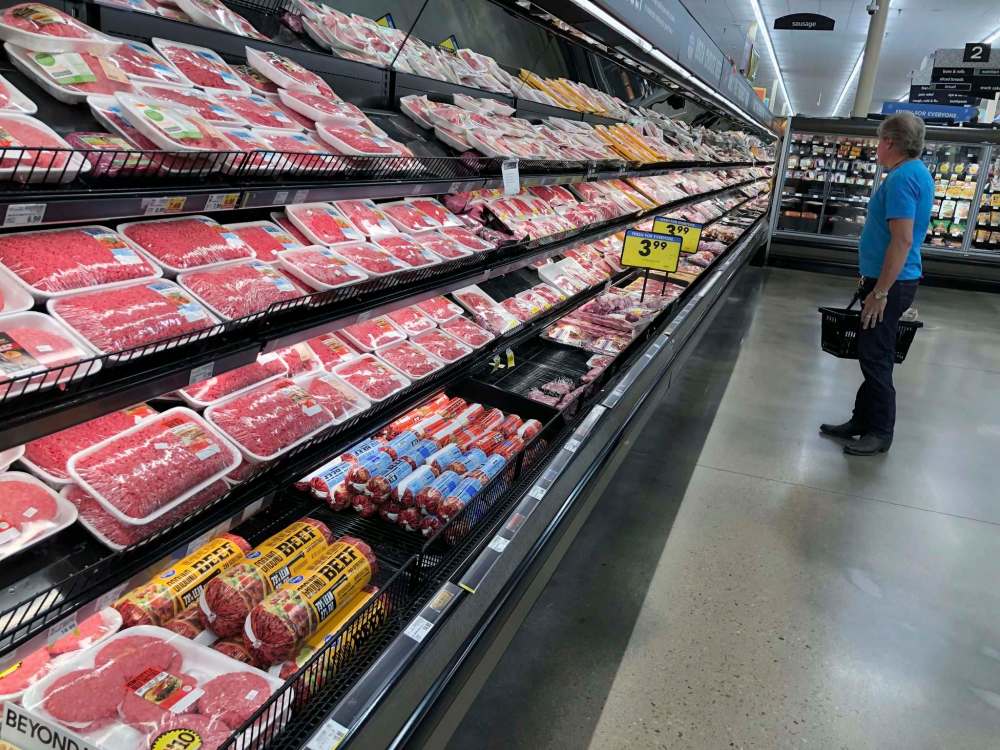Food industry will continue to deliver
Advertisement
Read this article for free:
or
Already have an account? Log in here »
To continue reading, please subscribe:
Monthly Digital Subscription
$1 per week for 24 weeks*
- Enjoy unlimited reading on winnipegfreepress.com
- Read the E-Edition, our digital replica newspaper
- Access News Break, our award-winning app
- Play interactive puzzles
*Billed as $4.00 plus GST every four weeks. After 24 weeks, price increases to the regular rate of $19.00 plus GST every four weeks. Offer available to new and qualified returning subscribers only. Cancel any time.
Monthly Digital Subscription
$4.75/week*
- Enjoy unlimited reading on winnipegfreepress.com
- Read the E-Edition, our digital replica newspaper
- Access News Break, our award-winning app
- Play interactive puzzles
*Billed as $19 plus GST every four weeks. Cancel any time.
To continue reading, please subscribe:
Add Free Press access to your Brandon Sun subscription for only an additional
$1 for the first 4 weeks*
*Your next subscription payment will increase by $1.00 and you will be charged $16.99 plus GST for four weeks. After four weeks, your payment will increase to $23.99 plus GST every four weeks.
Read unlimited articles for free today:
or
Already have an account? Log in here »
Hey there, time traveller!
This article was published 23/09/2020 (1852 days ago), so information in it may no longer be current.
MANY months into the COVID-19 pandemic, we know more about this relentless virus and how it behaves and spreads. Using this limited but growing scientific knowledge, public-health measures have kept us largely safe.
Back in March, given the unknowns we needed to manage, the only solution possible was a complete lockdown. It came into our lives violently, enticing many to panic-buy, thinking they would not be allowed to leave their homes for weeks, possibly months.
As consumers, we behaved irrationally as we coped with many uncertainties. Regrettably, over-buying food led to more food waste and added unnecessary pressure on the food supply chain. The food industry was also compromised by a food-service sector that was almost completely idle for weeks.

In addition, the livestock industry was hard hit by COVID-19. Twelve meat processing plants had to shut , some for as long as a month, because so many employees contracted the virus. The Cargill plant in High River, Alta., became a case study when it experienced the largest outbreak at one address in the country.
The weird and wacky quest for toilet paper aside, empty shelves where food belonged gave many a profound, heart-thumping fear of food insecurity. It became real for many people, likely for the first time in their lives.
After all, North America hasn’t experienced the famine, major wars or chronic civil unrest seen elsewhere in the world over the last century. In the land of abundance and bounty, running out of food is something that happens elsewhere.
Though pictures of empty shelves led Canadians to believe our food system has its limits, it quickly became apparent that the shelves would continue to be stocked, however messy the process of getting it there might be.
Panic slowly disappeared, allowing collective discipline and peaceful amenability to take over. Measures were put in place to keep people safe and responsible and, a few weeks into the pandemic, rationing became an expectation. All measures were gracefully executed as consumers complied.
Technologies and just-in-time procurement allowed the food industry to absorb the unprecedented shock in March and April. In a stunning display, the food industry really delivered to ensure shelves were stocked. We witnessed a beautiful miracle of collaborative spirit.
The industry also learned how to serve consumers who are unable to get to grocery stores as quarantines and self-isolation measures forced many to order online. Barely six months ago, it was almost impossible to get a grocery order delivered within eight days. Now, most markets offer great home delivery service and will deliver just about anything, including groceries, within two hours. This was almost inconceivable when this crazy year began.
As a result of the pandemic, online food sales will triple the 2019 volume.
The food industry and consumers also benefited from the decision to allow borders to remain permeable throughout the pandemic. Just a few decades ago, that would not have happened. But cooler heads prevailed and governments around the world quickly understood that closing the borders to the movement of vital goods would only make matters worse.
Canadians should feel comforted by the willingness to allow the borders to remain permeable.
While most Canadians will be food secure, despite higher prices, this isn’t true for all Canadians. Poverty rates have increased during the pandemic and Statistics Canada reports that an additional 700,000 people have experienced food insecurity since March. Let’s hope the federal government has long-term plans for financially vulnerable Canadians.
The pandemic has made life challenging and, quite understandably, Canadians are on edge and a little restless going into the fall. But we don’t need to panic. Companies do learn, and it’s highly unlikely an uncontrolled, mismanaged scenario will happen again.
The food sector has been preparing for a potential second wave for months, and though the industry may not be perfect, we should trust that food will remain available across the country.
Sylvain Charlebois is senior director of the agri-food analytics lab and a professor in food distribution and policy at Dalhousie University.
© Troy Media


